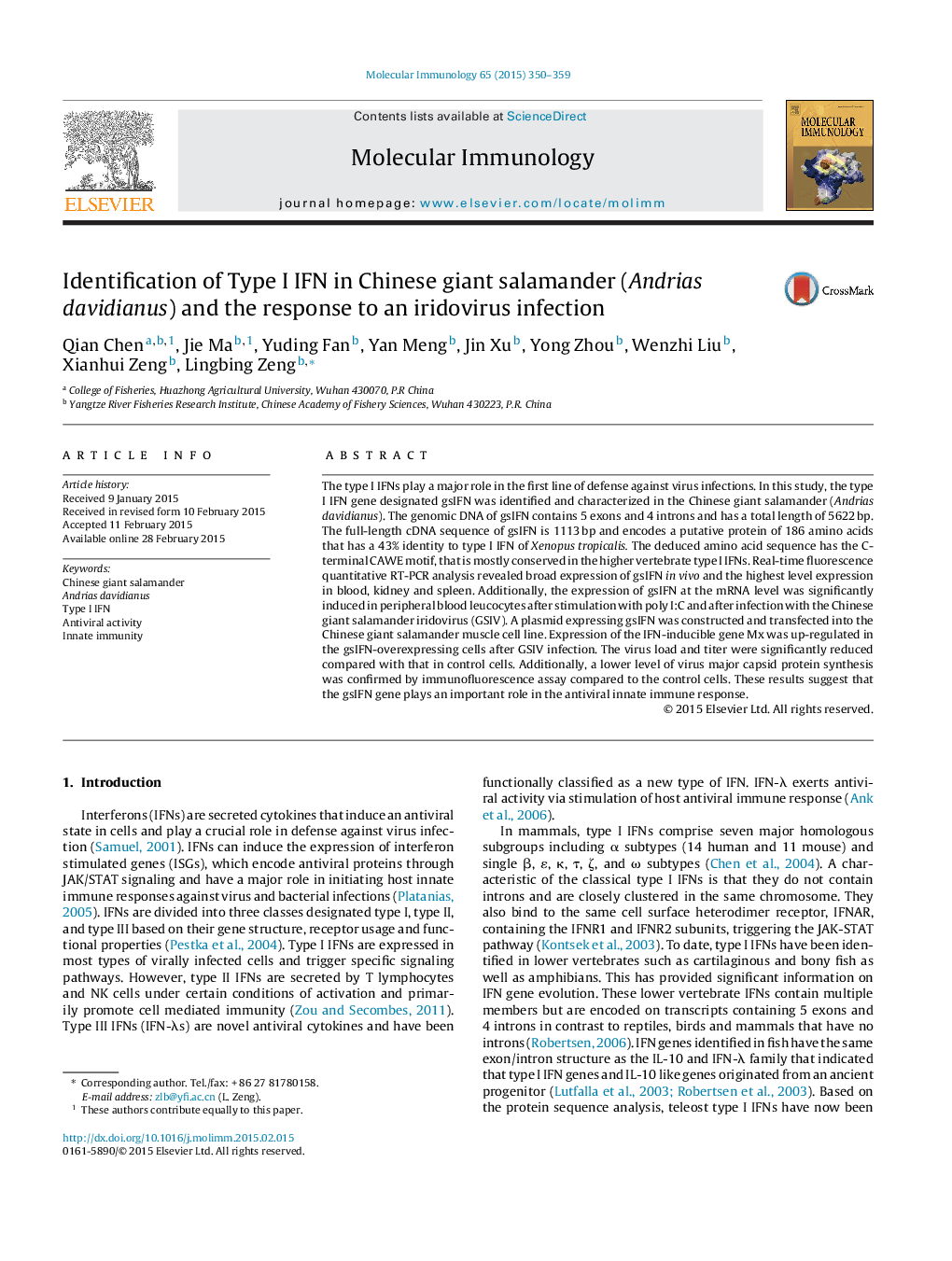| کد مقاله | کد نشریه | سال انتشار | مقاله انگلیسی | نسخه تمام متن |
|---|---|---|---|---|
| 2830794 | 1163754 | 2015 | 10 صفحه PDF | دانلود رایگان |

• This is the first report of the identification and characterization of typeIIFN in the Chinese giant salamander.
• Identification of the C-terminal CAWE motif in Chinese giant salamander typeIIFN.
• Chinese giant salamander typeIIFN was significantly induced by poly I:C and giant salamander iridovirus (GSIV) infection in peripheral blood leucocytes.
• The in vitro anti-viral function of the Chinese giant salamander typeIIFN was demonstrated for the first time.
The type I IFNs play a major role in the first line of defense against virus infections. In this study, the type I IFN gene designated gsIFN was identified and characterized in the Chinese giant salamander (Andrias davidianus). The genomic DNA of gsIFN contains 5 exons and 4 introns and has a total length of 5622 bp. The full-length cDNA sequence of gsIFN is 1113 bp and encodes a putative protein of 186 amino acids that has a 43% identity to type I IFN of Xenopus tropicalis. The deduced amino acid sequence has the C-terminal CAWE motif, that is mostly conserved in the higher vertebrate type I IFNs. Real-time fluorescence quantitative RT-PCR analysis revealed broad expression of gsIFN in vivo and the highest level expression in blood, kidney and spleen. Additionally, the expression of gsIFN at the mRNA level was significantly induced in peripheral blood leucocytes after stimulation with poly I:C and after infection with the Chinese giant salamander iridovirus (GSIV). A plasmid expressing gsIFN was constructed and transfected into the Chinese giant salamander muscle cell line. Expression of the IFN-inducible gene Mx was up-regulated in the gsIFN-overexpressing cells after GSIV infection. The virus load and titer were significantly reduced compared with that in control cells. Additionally, a lower level of virus major capsid protein synthesis was confirmed by immunofluorescence assay compared to the control cells. These results suggest that the gsIFN gene plays an important role in the antiviral innate immune response.
Journal: Molecular Immunology - Volume 65, Issue 2, June 2015, Pages 350–359